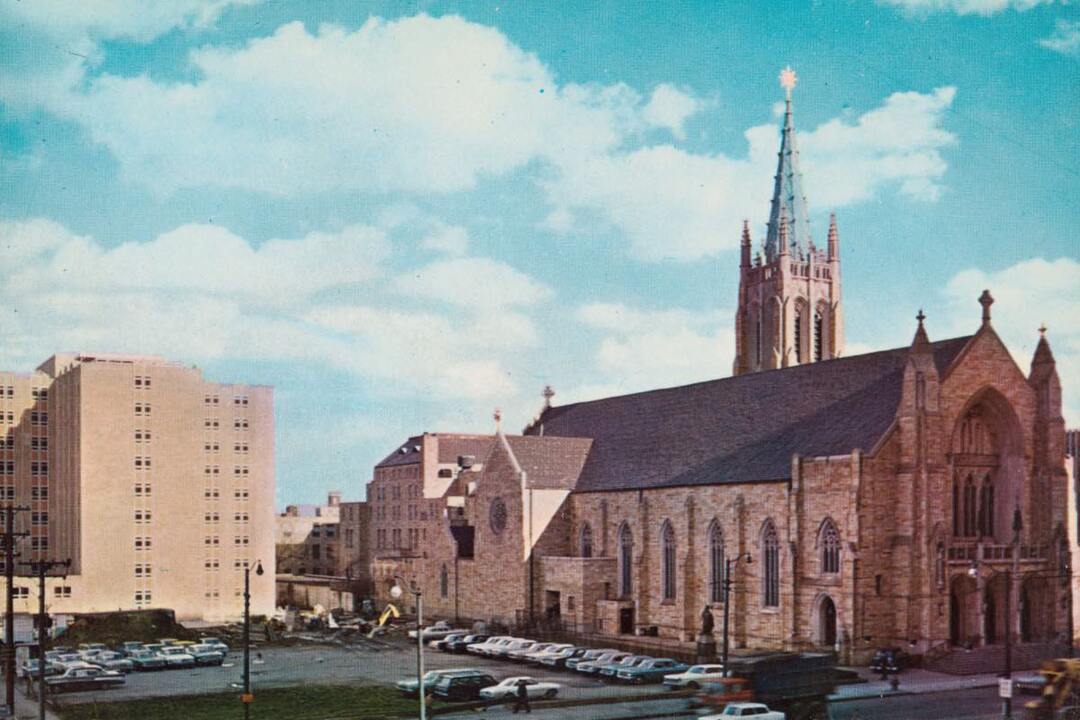Cathedral of Saint John the Evangelist
The Cornerstone of the Cleveland Roman Catholic Diocese
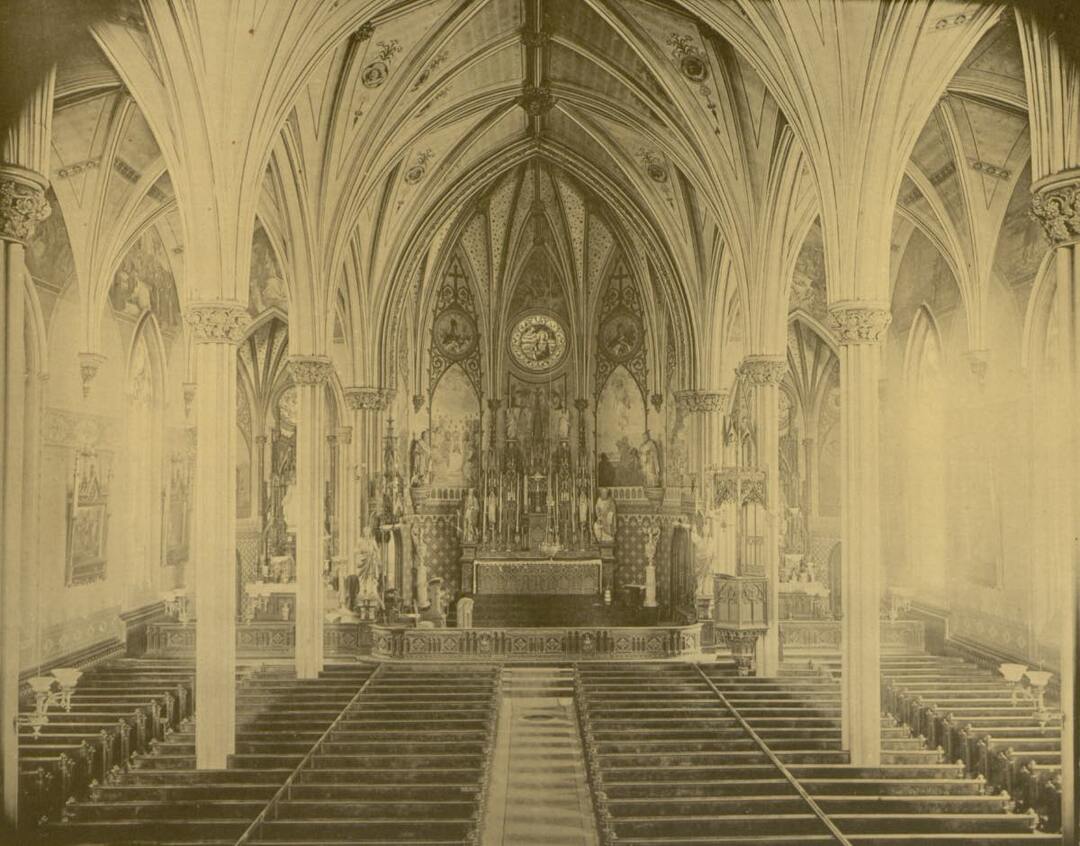
Cleveland's cathedral was one of the diocese's first churches established upon its creation in 1847. A series of renovations and expansions to the cathedral complex reflected the growth of Cleveland's Catholic community and diocesan responses to evolving guidance from the Vatican.
Amadeus Rappe was Cleveland's first Roman Catholic Bishop. He was born and ordained in France during the first half of the nineteenth century and recruited to serve in the United States in 1840 by Cincinnati, Ohio, Bishop John Purcell. He led the St. Francis DeSales parish in Toledo until 1847 when the Vatican created the Cleveland Diocese and appointed him Bishop. One of Bishop Rappe's first initiatives was to provide a 'downtown' church for the region's growing Catholic population and to initiate efforts to erect a Cathedral for the new diocese. He began both efforts simultaneously on land acquired by Father Peter McLaughlin, the pastor of Cleveland's existing Catholic parish, St. Mary of the Flats. The property is at the corner of Erie (East 9th) and Superior streets, Cleveland's eastern boundary at the time. A frame chapel, the Church of the Nativity, was consecrated on Christmas Day, 1848, while construction of the Cathedral of St. John the Evangelist was already begun on adjacent land facing Erie Street. During these early years, the Church of the Nativity would be utilized daily as a school, emphasizing the importance of Catholic education that Bishop Rappe championed.
Construction of the Cathedral continued while the bishop sought funding in the United States and Europe to complete the project. The brick structure in ornamental Gothic style was designed by Patrick Keely, a noted Catholic church architect, and featured interior columns, delicate stained-glass windows, and a stucco finish. The handcut wood altar came from France. The exterior featured buttresses and pinnacles in the Gothic tradition. The Cathedral was consecrated on November 7, 1852, by Bishop Purcell of Cincinnati who praised the growth and ambition of the Cleveland Catholic community. Cleveland's cathedral also served as a parish for local residents with an appointed pastor. St. John's maintains that role today.
Schools for boys and girls were added, respectively, in 1857 and 1867 on the property and a separate residence facing Superior Avenue for the Bishop of Cleveland was added in the 1870s. Exterior and interior renovations commenced in 1874. A steeple and spire were added while sandstone facing was completed. By 1884 a thorough interior renovation which included stained-glass windows and black walnut furnishings in the sanctuary was completed and in 1888, a new Cathedral school was built. The boys were taught by the Brothers of Mary, while the Ursuline Sisters continued to educate the girls.
In 1927, the Cathedral was redecorated and the crypt was rmodified and rededicated to hold the relics of St. Christine and the remains of Cleveland's deceased bishops. Also, the high school division of the Cathedral school had been phased out, and the newly organized Sisters' College (later called St. John's College), for teacher preparation, moved into the school space in 1928.
The Cathedral shared in one of the greatest events in the history of the Diocese when the Seventh National Eucharistic Congress was held in Cleveland in 1935. Thousands of people from throughout the United States and the around world came to Cleveland to adore and pledge their fidelity to Our Lord present in the Eucharist.
The Cathedral was again extensively refurbished and enlarged between 1946 and 1948 under the direction of Bishop Edward F. Hoban in celebration of its centennial. The firm of Stickle, Kelly and Stickle served as the architects with interior work by the local firm of John W. Winterich and Associates. The original brick exterior was replaced with Tennessee crab-orchard sandstone. The existing tower and transcepts were removed and a new tower constructed. Interior colored marbles and oak woodwork complemented the original decor. The newly rebuilt Cathedral was consecrated on September 4, 1948.
In 1977, yet another phase of Cathedral renovation began. In response to the mandates of the Second Vatican Council, the Cathedral's sanctuary was again redesigned and the main altar moved forward to the same location it occupied in the Cathedral of the 1850s. In 1988, six real bells for the Cathedral's tower were installed and rang for the first time on Christmas Eve.
Images

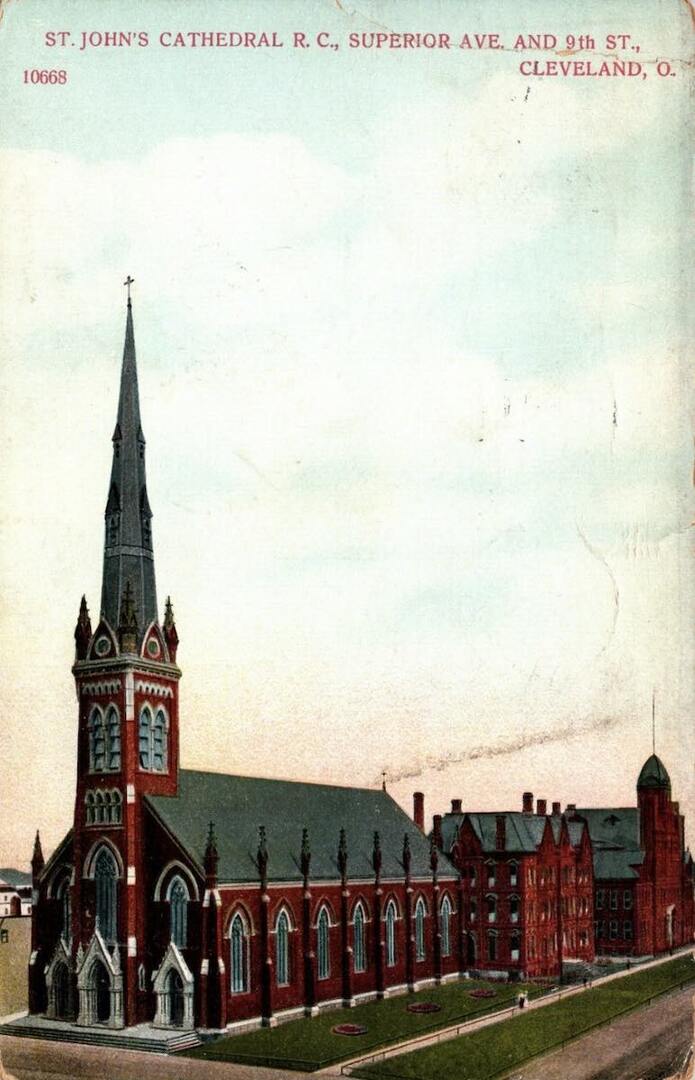
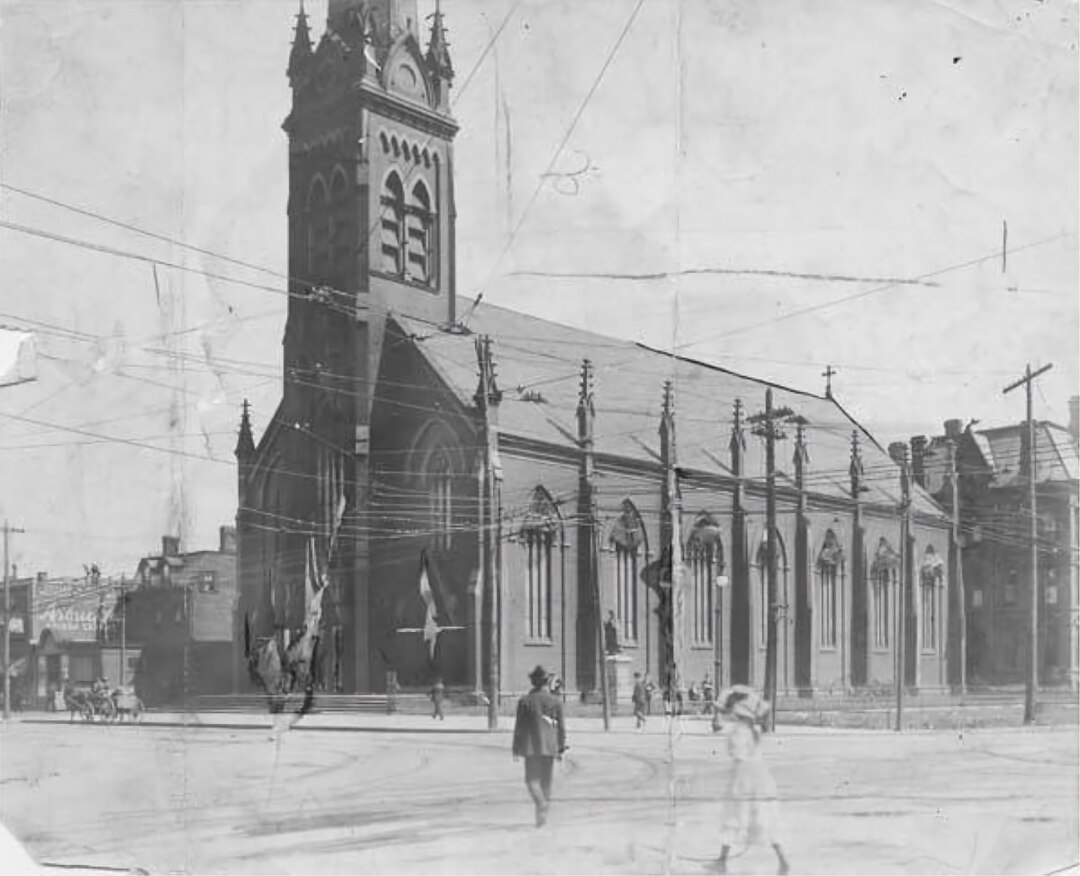
Cleveland Memory Project, Cleveland State University Library Special Collections
Date: 1903
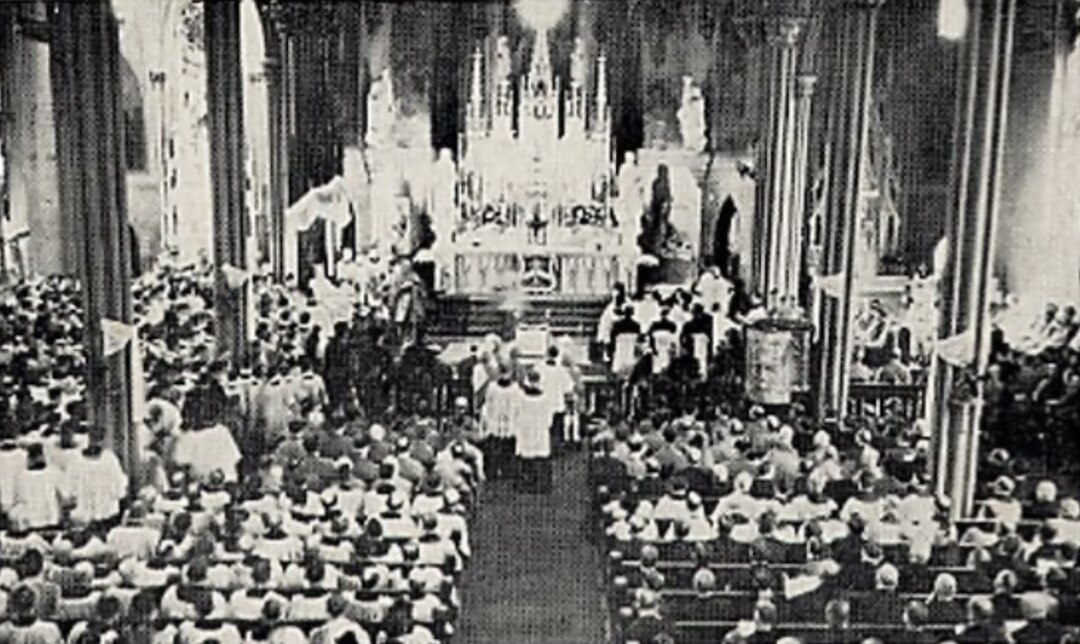
Cleveland and St. John Cathedral hosted the Seventh National Eucharistic Congress in 1935. The Catholic 'convention' featured meetings and seminars over several days in addition to worship services. The crowd pictured here assembled for Cardinal Hayes's reception. A parade also featured Alfred E. Smith, New York's governor and the first Catholic nominee for president of the United States. Source: Cleveland Memory Project, Cleveland State University Library Special Collections Date: 1935


